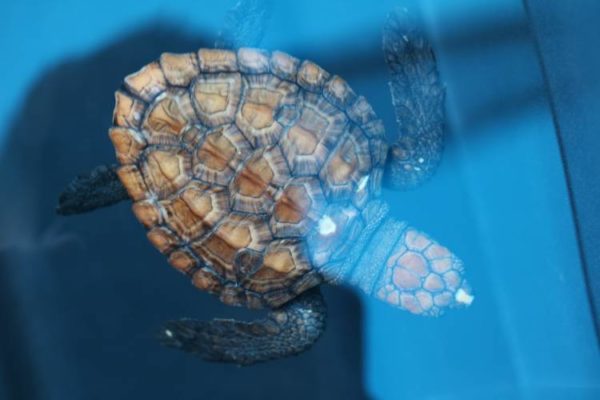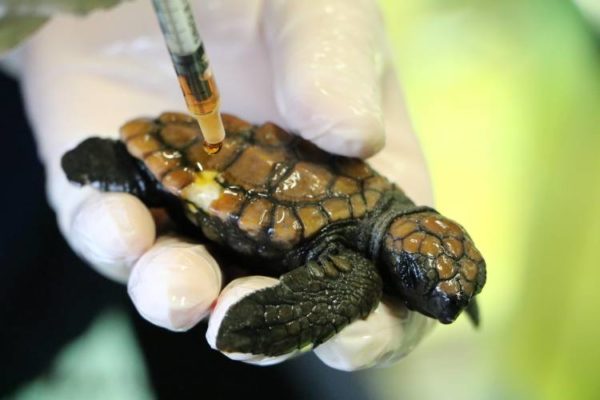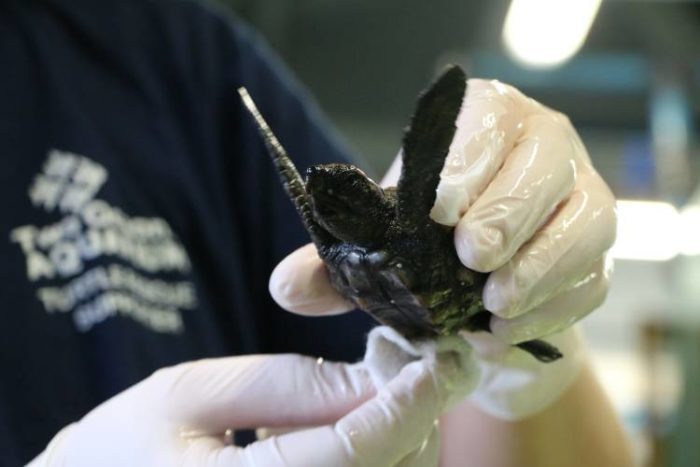With winter on the way, the number of stranded loggerhead turtle hatchlings along the southern coast of the Western Cape are expected to increase and locals are encouraged to help rescue these small marine animals.
Two Oceans’ Aquarium Education Foundation’s Turtle Rescue Programme team says it is being kept busy by the rising number of rescued turtle hatchlings found on the beaches from Plettenberg Bay to Cape Point.
“While this large number of turtles certainly is putting our incredible team of volunteers and rehabilitation centre staff to the test, we’ve dealt with large numbers before – in 2015 we were able to rehabilitate and release 162 turtles.”
“More than 127 turtle hatchlings have made their way to our rehabilitation centre, after being rescued by vigilant members of the public, and we are expecting that number to grow significantly as the Cape continues to be hammered by strong winds and swell.”
The first rescue of a turtle hatchling took place on March 1 2019 and was carried out by Tenikwa Wildlife in Plettenberg Bay and since then the numbers have increased to over a 100, “and we have been able to save most of them, thanks to the fast response of all parties involved,” says the Two Oceans Aquarium Education’s Turtle Rescue Programme.

The Two Oceans Aquarium has provided a list of areas where stranded hatchlings have been found:
– Struisbaai: 77 hatchlings
-Hermanus: 16 hatchlings
– Plettenberg Bay: 10 hatchlings
– Muizenberg: nine hatchlings
– Gansbaai: four hatchlings
– Sedgefield & Witsand: 3 hatchlings each
– Stillbaai: two hatchlings
– Gordon’s Bay, Fishhoek and Wilderness: one hatchling each.
Vital information about the species is gathered during the rescue and rehabilitation process, along with further insight into incidences of ingested plastic pollution. Due to the efforts of locals in the Cape’s coastal communities and the Turtle Rescue Network organisations, many stranded loggerhead turtles have been saved.
The Conversation Coordinator, Tabitha Noble, comments on the rescue efforts to save these marine animals and says it is “largely due to a really efficient Rescue Network that is operating well. I’m also excited by the fact that it seems like a lot of the turtles washing up are actually being rescued, which means that we have our bases covered along the coastline. That’s quite a comforting feeling, knowing that people are aware and actively looking. Even though it means more work for us, it’s exciting because it means the system is working.”

You can find more information on what to do if you encounter a stranded turtle by visiting the Two Oceans Aquarium website. Donations can also be made towards aiding rescue efforts and organisations here.
For residents of the Southern Cape, a list of Rescue Network Points, where the young turtles can be dropped off, are available here.
Volunteer Turtle Rescue Network Coordinator, Tracy Whitehead, commends the efforts of locals in rescuing these turtles. “We’ve met the most amazing people and the Rescue Network has made some incredible contacts. It’s just amazing how people have been helping.”
Why are they washing up in such large numbers?
According to Two Oceans Aquarium, there is no one definite reason as to why the turtles are washing ashore but rather a number of them.
“Unfortunately, the reality of the situation is that in most years thousands of turtle hatchlings perish on the South African coast – in fact, it is estimated that fewer than one or two in a thousand survive to adulthood, and that is not even accounting for manmade hazards like poaching, ghost fishing nets or plastic pollution,” it says.
Loggerhead turtles hatch in the northern parts of KwaZulu-Natal and swim south until they reach the Agulhas current. In many cases, hatchlings are pushed from the Agulhas current into the cold water of the Atlantic. Unable to survive in the colder waters, these hatchlings become gradually weaker, and this along with bad weather hinders their movement back to the warmer waters. In many cases, the small marine animals ingest plastic, become ill and die. The Agulhas current is supposed to carry these hatchlings east off the coast of the Western Cape and into the warmer Indian Ocean, where they would thrive.
“It is these weakened hatchlings that inevitably wash up on the Western Cape’s coast, and without human intervention, they have no chance of surviving. We have a responsibility to help these animals,” says the Two Oceans Aquarium.
Picture: Two Oceans Aquarium, Kyle Burns

